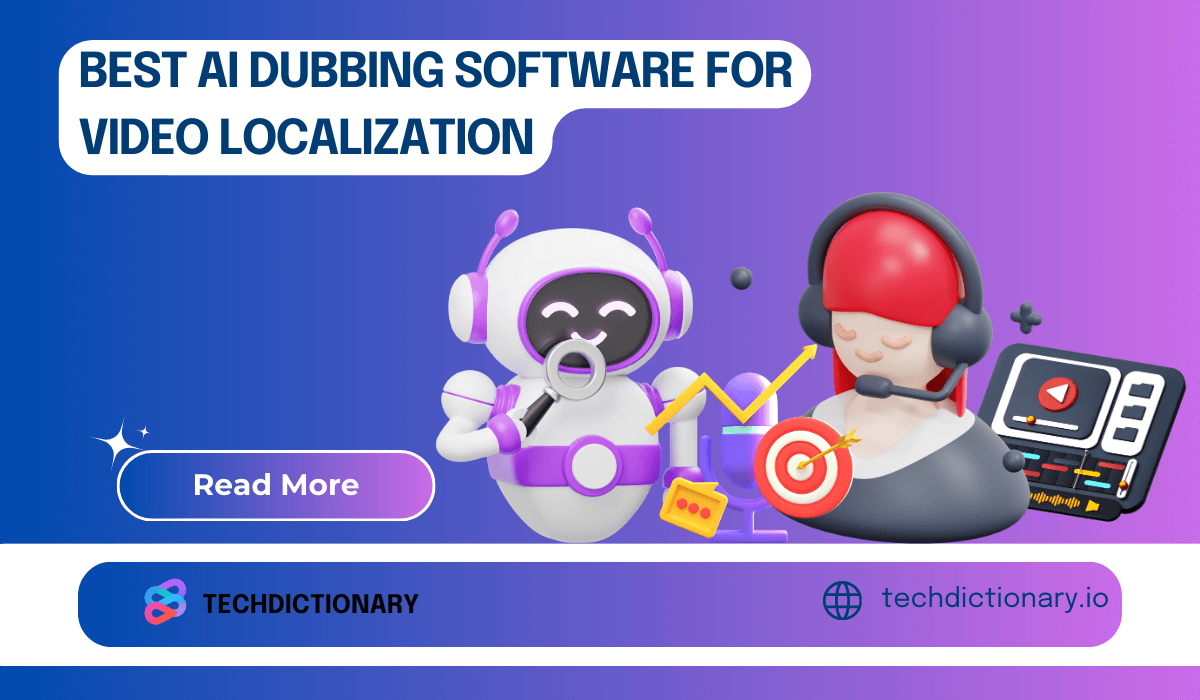
Video dubbing is crucial for reaching global audiences. Automatic dubbing apps have made the process faster and more affordable, but finding the right tool can still be challenging. After testing multiple software, I’ve compiled a list of best AI dubbing software that offer excellent quality and efficiency. These solutions can help you create compelling, multilingual content effortlessly.
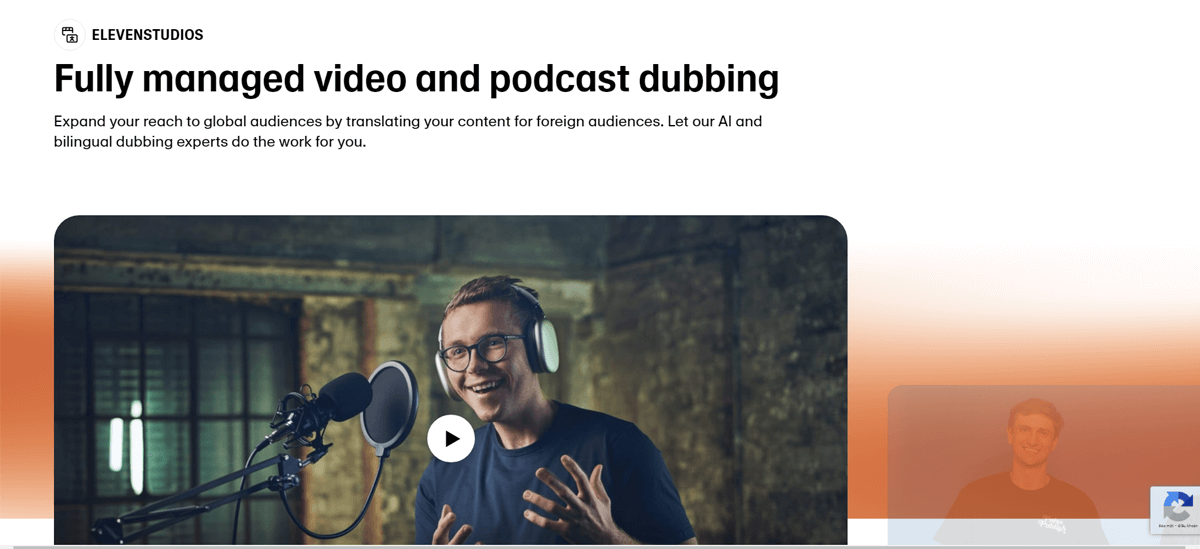
ElevenLabs – Best for Realistic Voice
ElevenLabs has long been recognized as a top-tier AI tool for text-to-voice synthesis, so when they introduced dubbing capabilities, I had to try it. The result? Impressive!
The new Dubbing & Video Translator allows me to upload audio or video and translate it into any of the 29 available languages. All I need to do is upload, choose the language, and let the AI do the rest, creating a naturally dubbed video. What’s more, I can use URLs from platforms like YouTube or TikTok, simplifying the process even further.
Plus, ElevenLabs’ Dubbing Studio gives me full editing control over transcripts and translations, making it ideal for more complex projects like films or TV shows.
While AI-generated voices sound increasingly realistic, there’s an ongoing debate: Can AI ever truly replace human voice actors? Read our in-depth discussion.
Key features
| Pros | Cons |
| ✔ Wide variety of customization features available
✔ Supports a large number of languages ✔ Strong API integration ✔ Enjoy a user-friendly experience ✔ Quick voice dubbing ✔ Simple voice cloning with just a brief audio clip, far less demanding than other software ✔ Retains background music while dubbing Benefit from a free plan and flexible paid tiers starting at just $1 |
✘ The free version has limited functionalities
✘ Premium plans can be costly, particularly for smaller-scale users. ✘ May struggle with excessive background noise or music. ✘ English voice has an Indian accent, which may not suit those looking for neutral or American English tones |
Pricing:
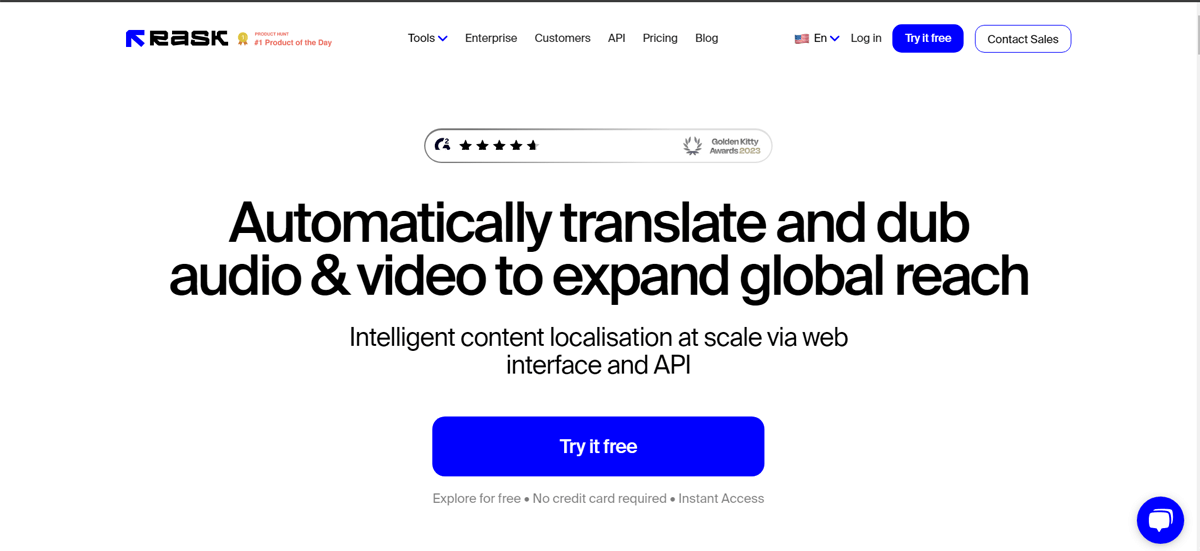
Rask.ai – Best for Wide Language
Expand your content’s reach efficiently and cost-effectively with Rask.ai, the top choice foe wide language AI dubbing software. Rask.ai not only supports over 130 languages but also offers accurate voice cloning and multi-speaker support for superior translation quality. Staring at just $50/month, Rask.ai delivers exceptional value for scaling your content globally.
Key features
| Pros | Cons |
| ✔ Supports dubbing videos into over 130 languages
✔ Natural voiceovers thanks to features like VoiceClone and Multispeaker ✔ Long-form content support that is perfect for movie or education purposes ✔ Create captions, subtitles, and dubbing for viewers with hearing impairments or language preferences. ✔ Continuously updates new features |
✘ In-depth video editing functionalities may be limited
✘ Subscription costs might be high for smaller users or independent creators ✘ Translations and voiceovers may vary in accuracy, especially for less common languages or dialects. |
The Pricing:
Despite the higher pricing, the ability to dub videos in multiple languages makes it a valuable investment for global content creation.
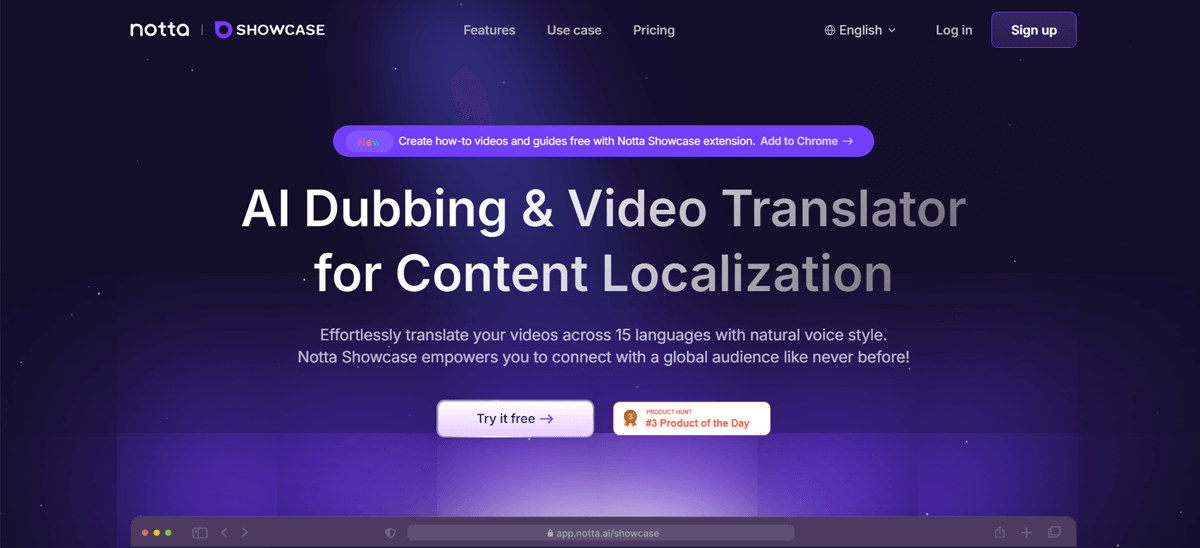
Notta – Best for Easy to Use
For those seeking a cost-effective and easy-to-use video dubbing tool to eliminate manual work, Notta Best AI dubbing Software stands out as an excellent choice.
Key features
| Pros | Cons |
| ✔ The voice cloning feature produces authentic, natural-sounding voiceovers
A generous free plan provides up to 30 minutes of dubbing Quick translation speeds |
✘ It can’t detect or differentiate between multiple speakers in a video |
Pricing:
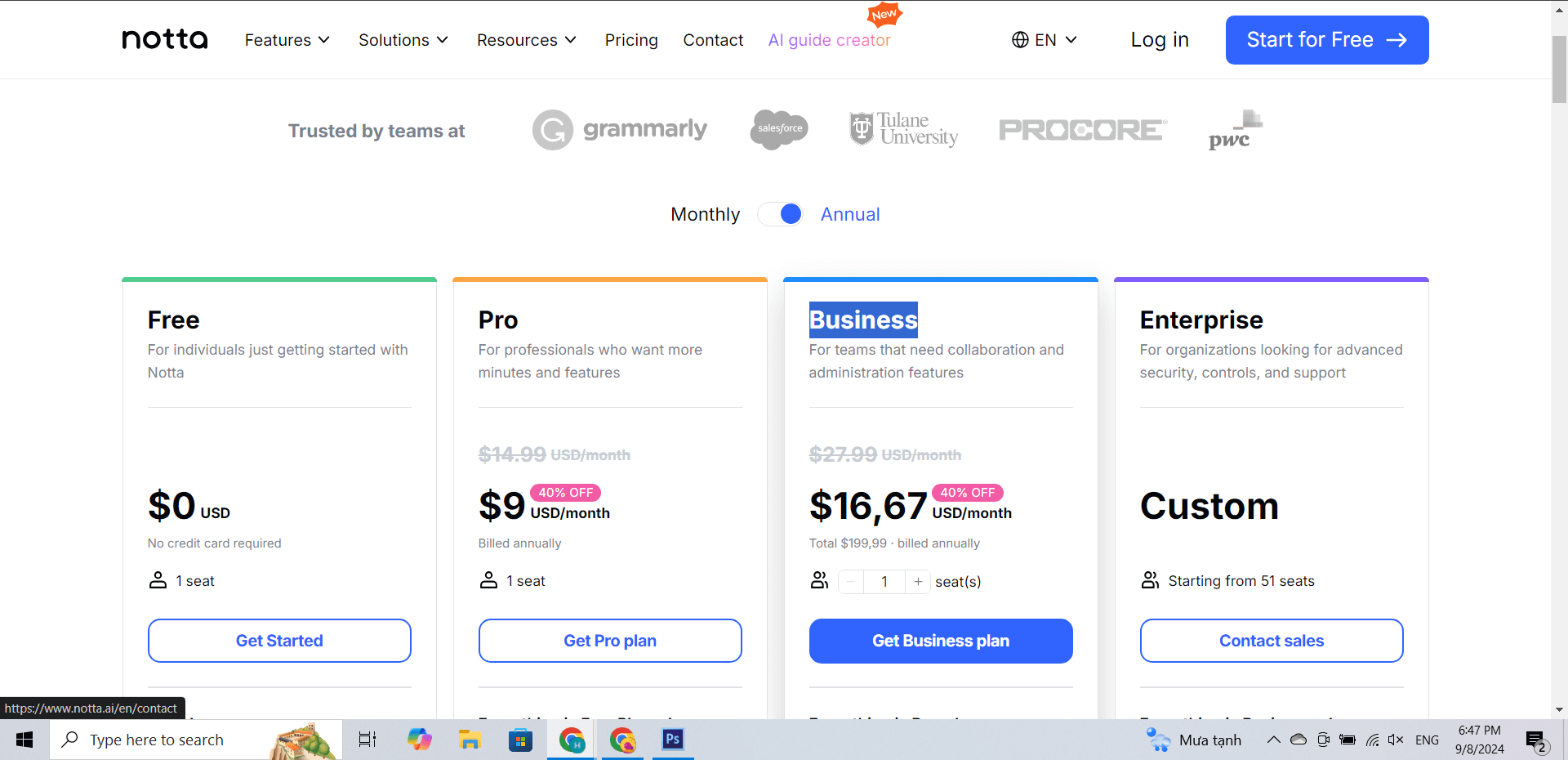
Best Ai Dubbing Software Notta Pricing
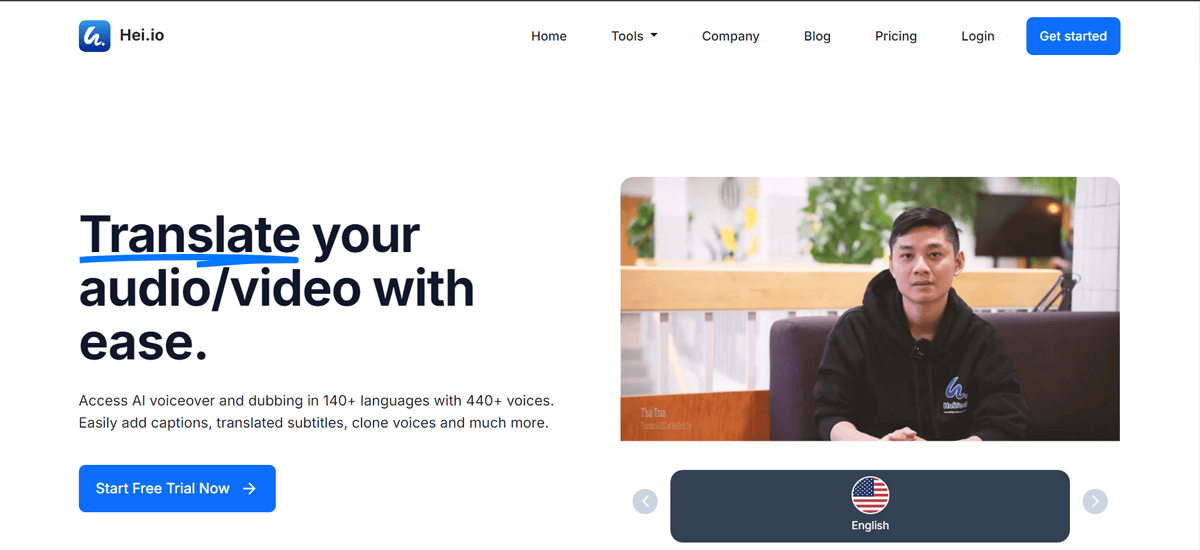
Hei.io
As one of the newest startups in the video translation niche, Hei.io is quickly gaining attention with its advanced dubbing capabilities.
Key features
| Pros | Cons |
| ✔ Over 140+ languages supported
✔ Provides realistic and natural-sounding voiceovers ✔ Easy-to-use interface ✔ Wide range of customization options ✔ Suitable for scaling large projects |
✘ Manual adjustments
✘ While user-friendly, the basic interface might not meet the advanced needs of experienced users. |
Pricing
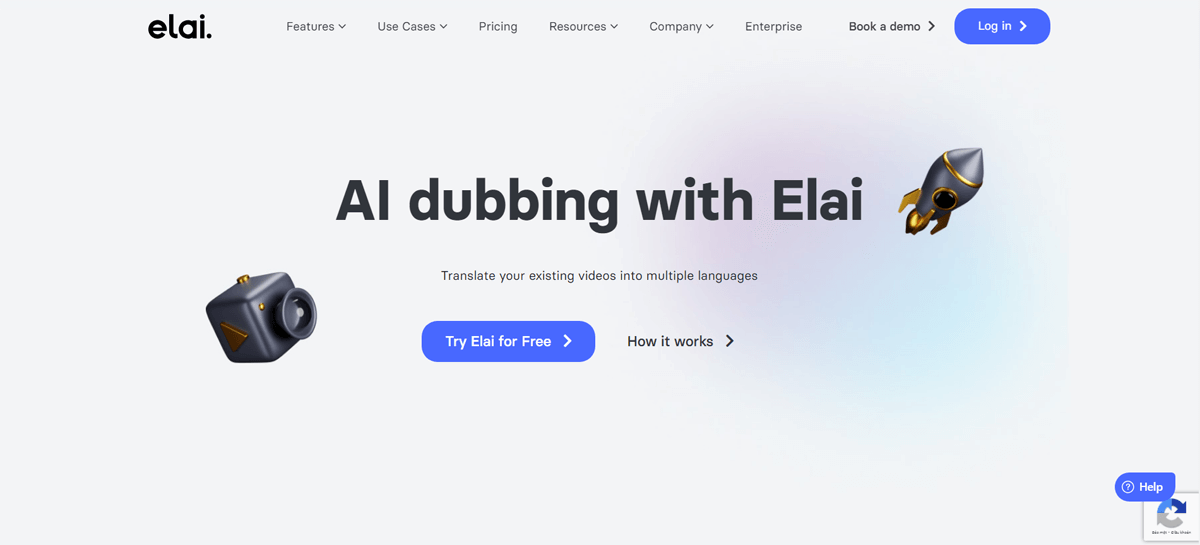
Elai
Elai makes it easy to dub your existing videos into up to 75 languages. By harnessing the latest AI technology, Elai analyzes your video and generates a dubbed version that synchronizes perfectly with the original lip movements and facial expressions.
Key features
| Pros | Cons |
| ✔ Dubbing in Multi-languages
✔ Cost-effective and time-saving ✔ Quality narration ✔ User-Friendly Interface |
✘ Limited features with free version |
The Pricing
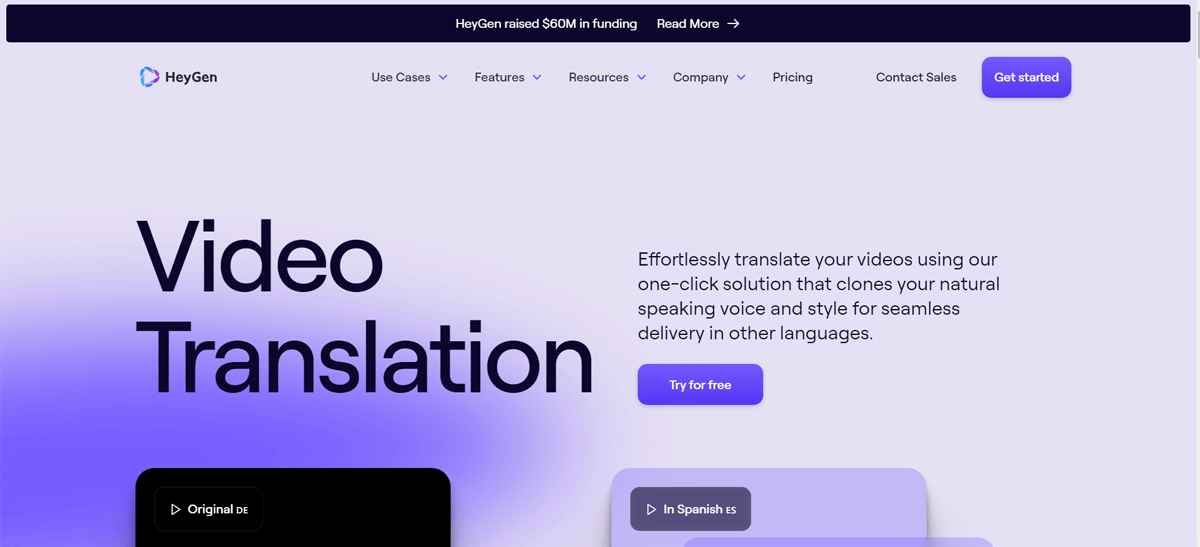
HeyGen – Best for Natural-sounding Sounds
HeyGen AI has revolutionized video dubbing in an amazing way. A Twitter user demonstrated its power by translating an English video into Hindi with impeccable lip sync and natural audio. With support for 8 languages now and plans to expand to 40, HeyGen offers a streamlined solution for localizing videos while maintaining authentic lip movements and speech.
Key features
| Pros | Cons |
| ✔ Natural-sounding audio
✔ Accurate lip sync ✔ Easy-to-use interface ✔ Multilingual support ✔ Time-saving thanks to streamlesslines the video dubbing process |
✘ Limited languages range
✘ Custom pricing for additional features or larger projects can be intricate |
Pricing
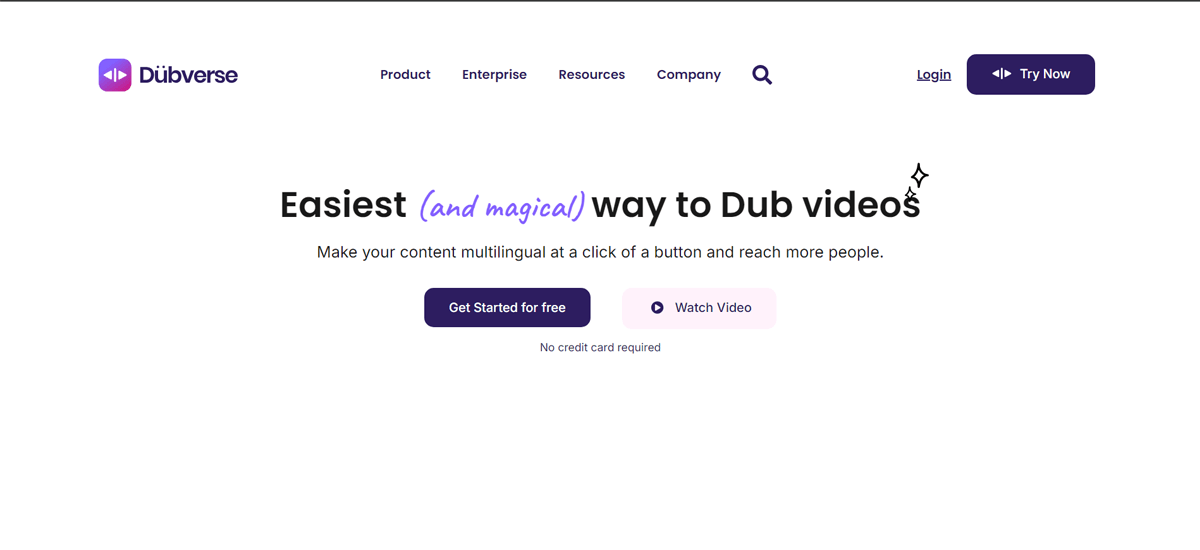
Dubverse
Experience the power of Dubverse AI, which provides lifelike voiceovers in more than 60 languages using cutting-edge technology. The platform supports a broad range of speakers, making it easy to upload videos from various sources like YouTube or TikTok.
Key features
| Pros | Cons |
| ✔ Coverage in over 60 languages
✔ Flexible upload options ✔ Diverse voice library ✔ Intuitive script editing ✔ Automatic subtitles |
✘ Limitations in voice cloning options and video length |
The Pricing
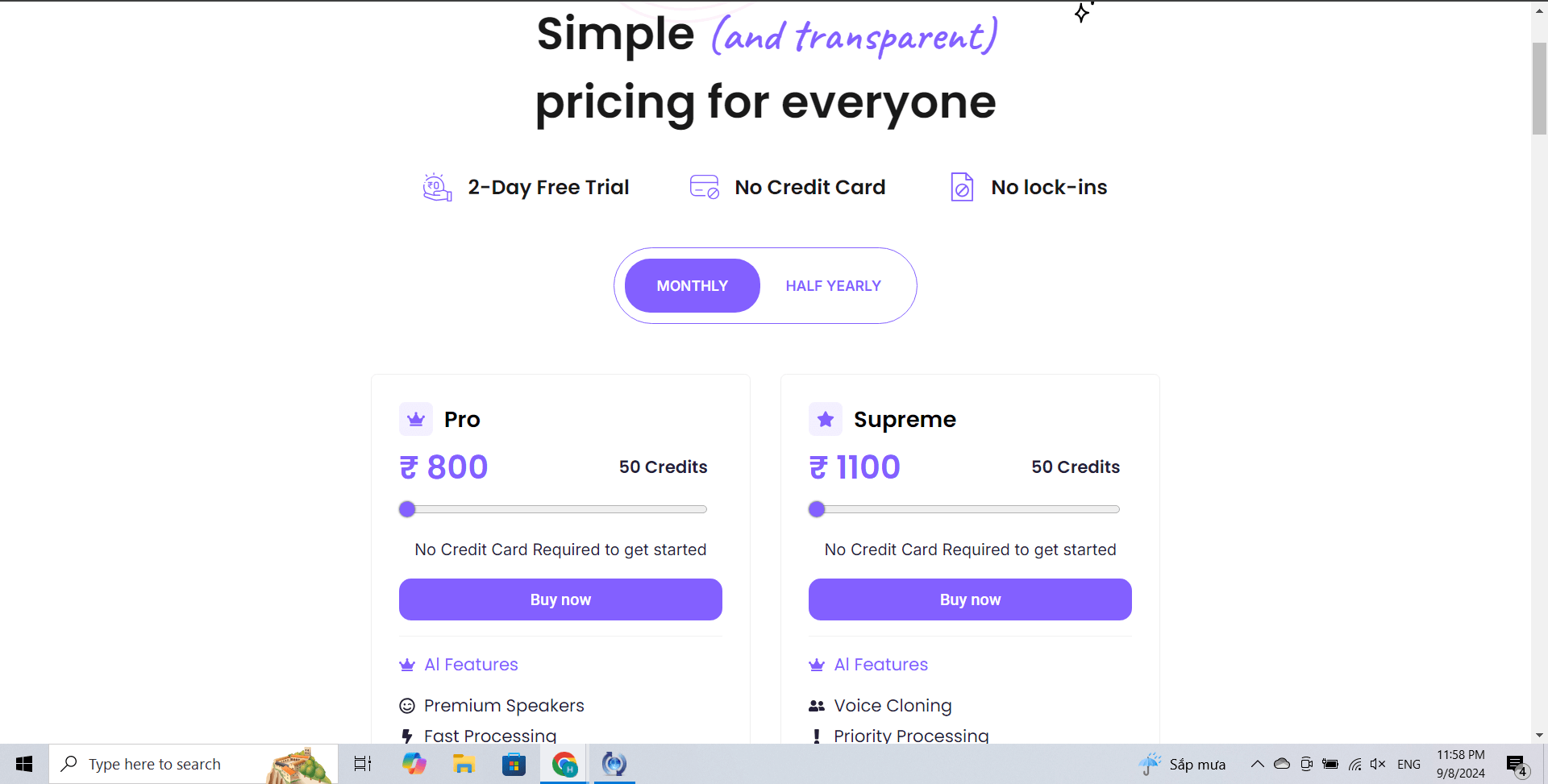
Best Ai Dubbing Software Dubverse Pricing
When choosing the best AI video dubbing software, I considered several important factors:
AI dubbing has improved significantly, offering natural-sounding voice translation and good lip sync for common languages. However, there are limitations, such as grammatical inaccuracies and struggles with complex narration and unique dialects. While AI dubbing handles straightforward videos well, human dubbing still excels in accuracy and nuance.
Each of the top 7 options offers unique features tailored to various requirements, from advanced voice synthesis to intuitive user interfaces. Evaluate your specific needs and test the software to find the perfect fit for localization projects.
Have questions or need further assistance? Leave your request, and TechDictionary will answer you as soon as possible!
AI dubbing software uses artificial intelligence to automatically translate video narrations into different languages and sync the dubbed audio with the speaker’s lip movements. It simplifies the process for content creators by eliminating the need for translators, voice actors, and video editors. Just upload your video, select the language, and let the AI handle the rest.
Yes, some dubbing AI tools offer free versions with limited features, while others may require a subscription for full access
Dubbing is the process of replacing original dialogue with different languages, whereas ADR utilizes AI to replace dialogue while maintaining lip synchronization.
AI dubbing has made great strides and can now produce high-quality, natural-sounding results. However, it may still fail to capture the full nuance and emotion that human voice actors bring.

